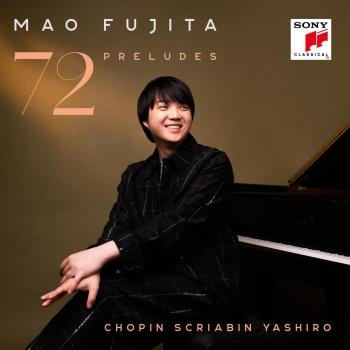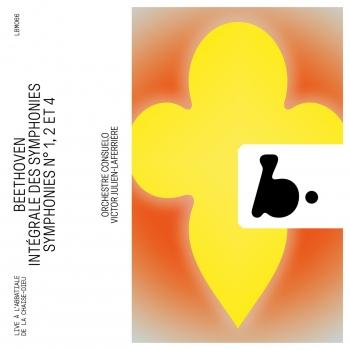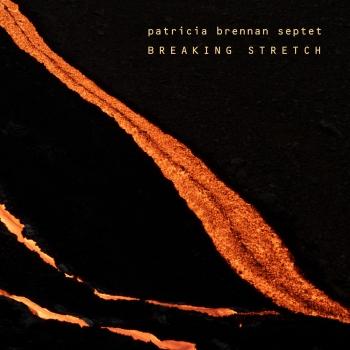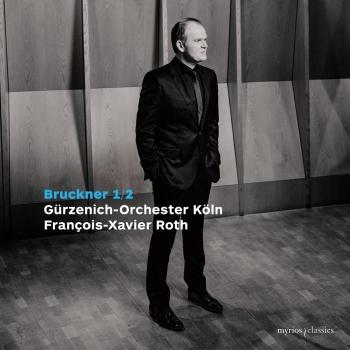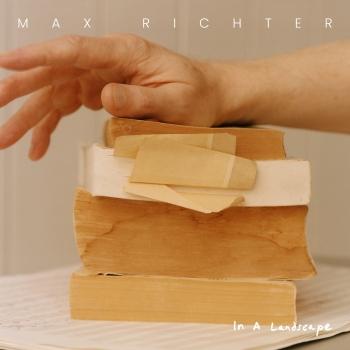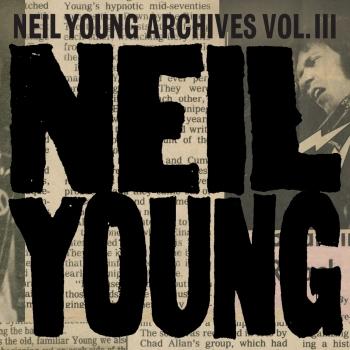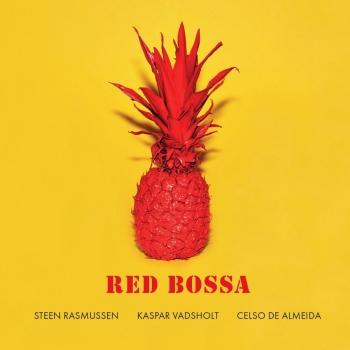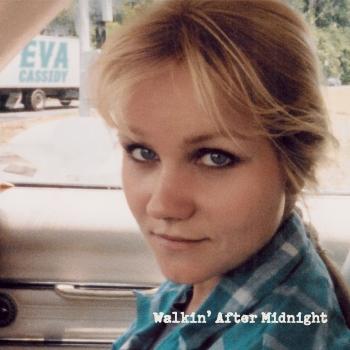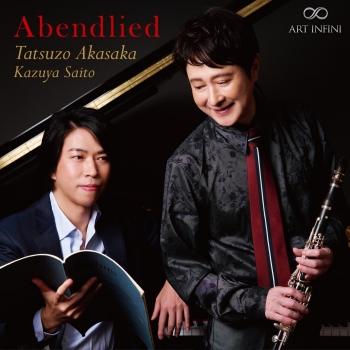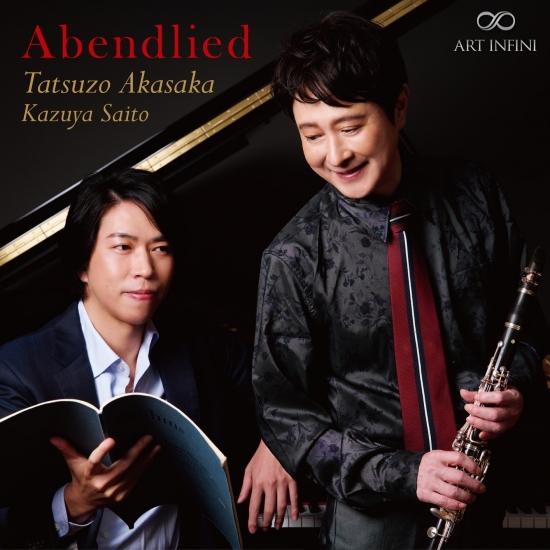
Abendlied Tatsuzo Akasaka & Kazuya Saito
Album info
Album-Release:
2024
HRA-Release:
05.07.2024
Label: ART INFINI
Genre: Classical
Subgenre: Instrumental
Artist: Tatsuzo Akasaka & Kazuya Saito
Composer: Johannes Brahms (1833-1897), Robert Schumann (1810-1856)
Album including Album cover
- Johannes Brahms (1833 - 1897): Clarinet Sonata No. 1 in F Minor, Op. 120 No. 1:
- 1Brahms: Clarinet Sonata No. 1 in F Minor, Op. 120 No. 1 (Version for Clarinet & Piano): I. Allegro appassionato07:57
- 2Brahms: Clarinet Sonata No. 1 in F Minor, Op. 120 No. 1 (Version for Clarinet & Piano): II. Andante un poco adagio05:21
- 3Brahms: Clarinet Sonata No. 1 in F Minor, Op. 120 No. 1 (Version for Clarinet & Piano): III. Allegretto grazioso04:19
- 4Brahms: Clarinet Sonata No. 1 in F Minor, Op. 120 No. 1 (Version for Clarinet & Piano): IV. Vivace05:07
- Clarinet Sonata No. 2 in E-Flat Major, Op. 120 No. 2:
- 5Brahms: Clarinet Sonata No. 2 in E-Flat Major, Op. 120 No. 2 (Version for Clarinet & Piano): I. Allegro amabile07:49
- 6Brahms: Clarinet Sonata No. 2 in E-Flat Major, Op. 120 No. 2 (Version for Clarinet & Piano): II. Allegro appassionato05:29
- 7Brahms: Clarinet Sonata No. 2 in E-Flat Major, Op. 120 No. 2 (Version for Clarinet & Piano): III. Andante con moto - Allegro06:47
- Robert Schumann (1810 - 1856): Fantasiestücke, Op. 73:
- 8Schumann: Fantasiestücke, Op. 73: No. 1, Zart und mit Ausdruck02:57
- 9Schumann: Fantasiestücke, Op. 73: No. 2, Lebhaft, leicht03:23
- 10Schumann: Fantasiestücke, Op. 73: No. 3, Rasch und mit Feuer03:59
- 12 Klavierstücke, Op. 85:
- 11Schumann: 12 Klavierstücke, Op. 85: No. 12, Abendlied (Arr. for Clarinet & Piano by Anonymous)02:23
Info for Abendlied
Tatsuzo Akasaka's first full-length album in 12 years. Listen to Brahms' masterpieces from his last years and Schumann's masterpieces full of nourishment. After purchasing a clarinet as a hobby in response to the "Evening Songs" album, I wanted to learn more about the clarinet, and the first record I listened to was the Brahms Sonatas by Leopold Urach. The next record I heard was Alfred Prinz's performance. I later learned that Richard Muehlfeldt, a friend of Brahms, had premiered this sonata, and that his successor was Urach, and then his successor was Prinz. When I was studying in Paris, I learned that Prinz was giving lessons at a music festival in Salzburg, and I went to study with him with many exciting thoughts in my mind. I recall with fondness how he gave me detailed advice, such as that the third movement of Brahms' Sonata No. 1 is not a waltz but an Italianita lentola, and that the second movement of Sonata No. 2 is an appassionata ma non troppo allegro, and so on. Since then, many years have passed with various studies and experiences...There are no recordings of Brahms's time, of course, because there are no sound sources. When I was wondering what kind of performance I should give to this masterpiece from Brahms' last days, I was invited by Toshiki Muto, a music producer, to hear Kazuya Saito's piano recital. After listening to his performance, I sincerely wanted to perform with Mr. Saito, and we talked about a CD album. When we actually had a rehearsal, I found out that, in addition to his piano technique (Brahms was a piano virtuoso as good as Liszt), Mr. Saito is actually a composer, and his approach to creating music with kindness and without compromise, such as analyzing, harmonizing, and even suggesting phrases and motifs here and there, was wonderful and truly imaginative. We had many wonderful and fruitful rehearsals that went far beyond what I had imagined. The recording was successfully completed with two of Schumann's masterpieces under the supervision of producer Muto, a long-time friend who is also musically well versed in the field. With everyone's tremendous cooperation, I am truly happy that we were able to make a wonderful recording that dispelled my initial fears.
Tatsuzo Akasaka, clarinet
Kazuya Saito, piano
Tatsuzo Akasaka
After studying at the Kunitachi College of Music, Akasaka went to France, where he completed courses of study at the International Conservatory of Music of Paris, the Versailles Conservatory of Music, and the Paul Dukas Conservatory, which he graduated at the head of his class.
Akasaka is a winner of the third prize at the Concours International du Festival de Musique de Toulin, the first prize at the Japan Woodwind Concours, the second prize (with no first prize winner) at the Japan Clarinet Concours, and the first prize at the Concours International du Musique de Paris.
Over 20 years, Akasaka has been active in performing not only in recitals, but also in numerous collaboration with orchestras from abroad as well as of Japan and distinguished chamber ensembles including the Gewandhaus Quartet. He is an artist frequently invited to perform in subscription concerts of orchestras. For his top-class technique and musicianship as well as his character of a star, Akasaka is recognized as the best solo clarinetist of Japan.
This album contains no booklet.

